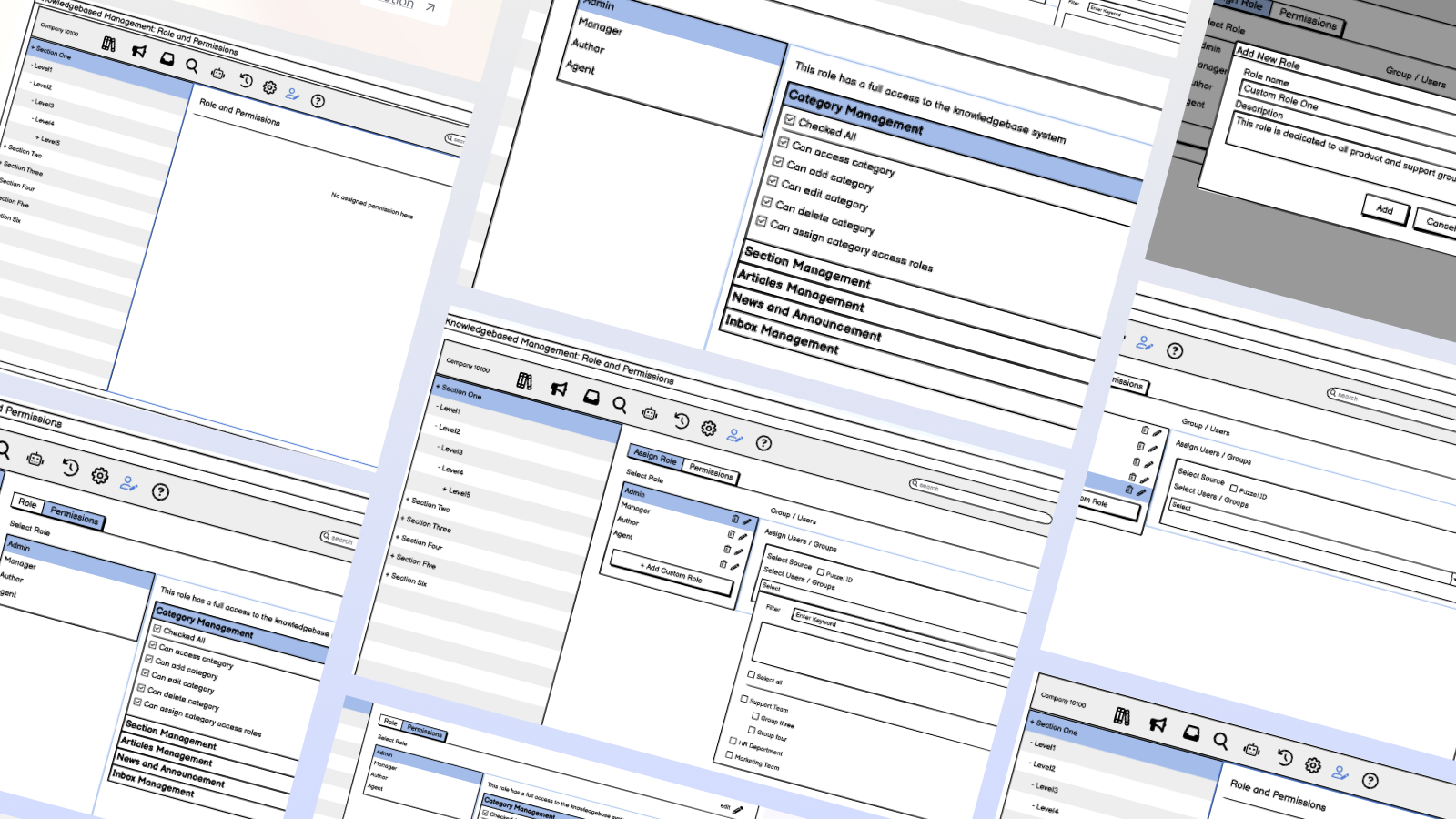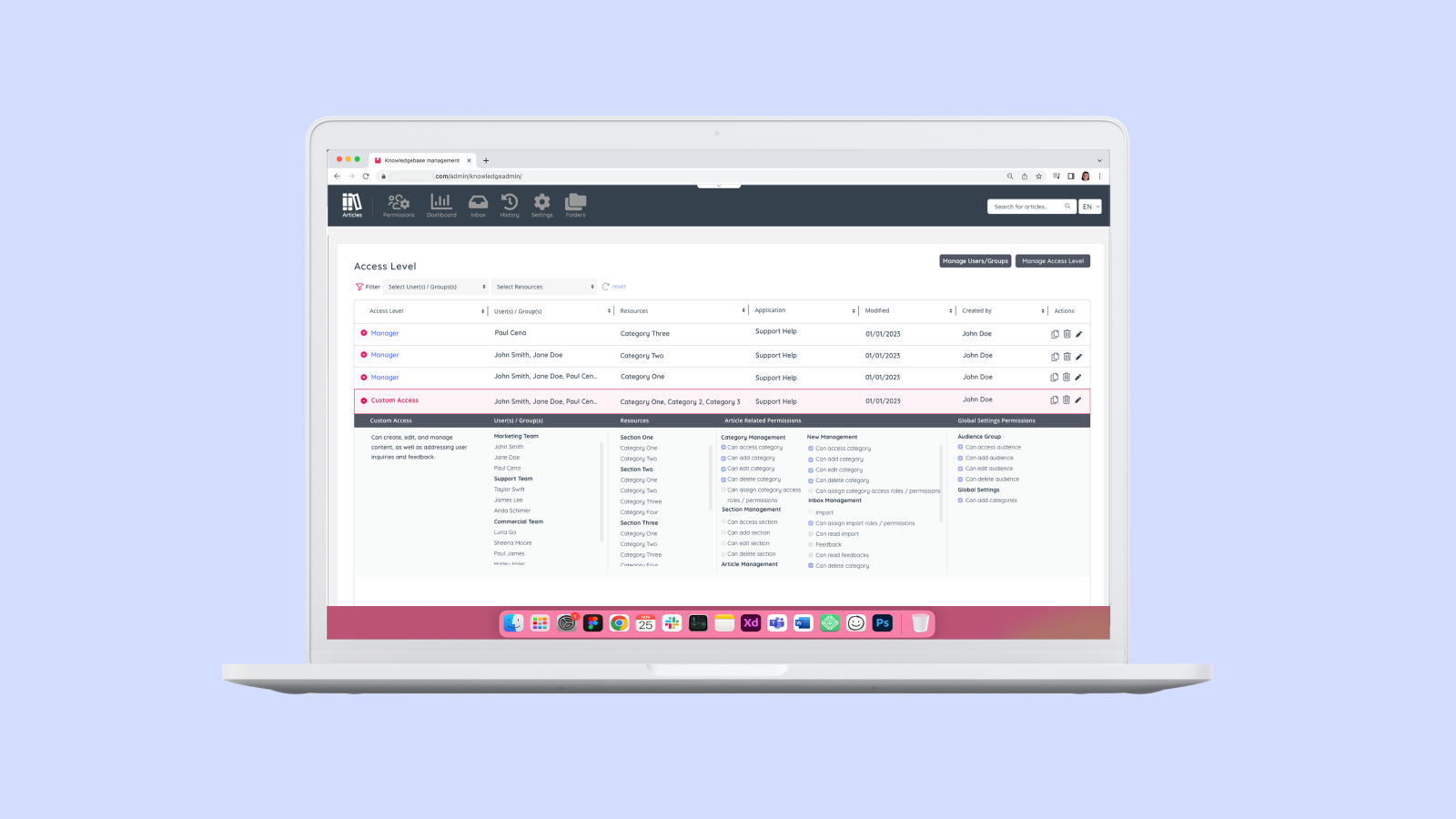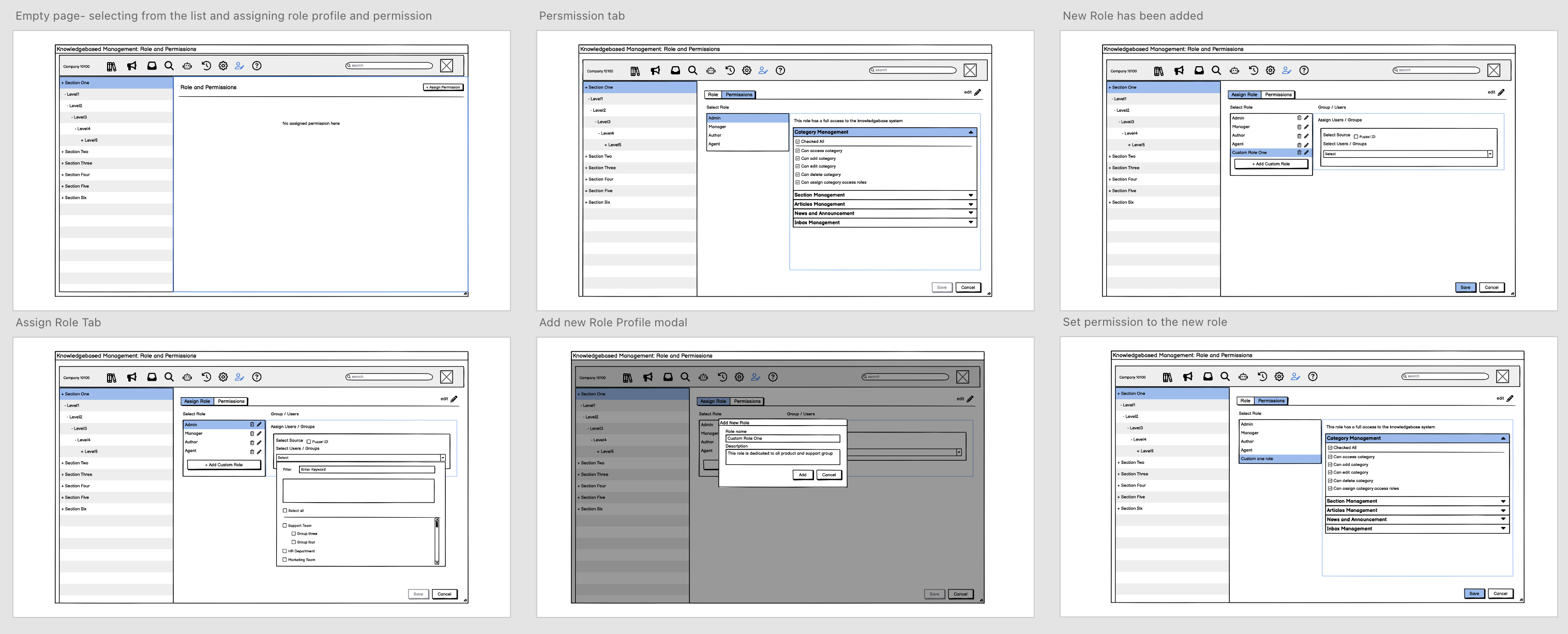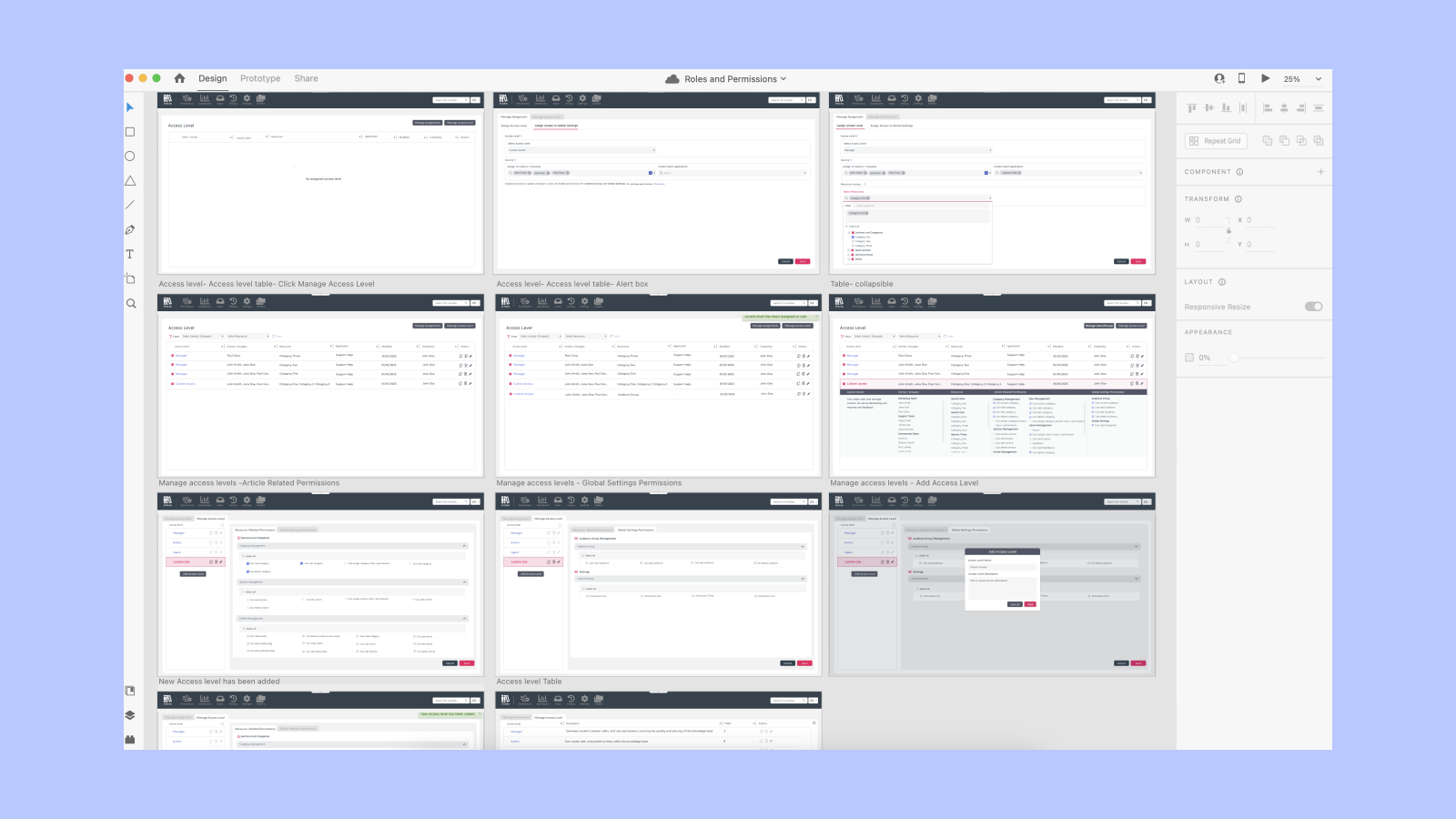Anjella De Los Reyes
Turning complex ideas into seamless experiences.
Knowledge Management System - Roles and Permissions


Access control in a knowledge management system refers to the ability to manage and restrict who can view, edit, or manage specific content within the system based on roles, permissions, or groups. It ensures that sensitive or proprietary information is only accessible to authorized users, maintaining security and relevance Currently the platform doesn’t have access level control. We plan to introduce an advanced access level system, aiming to enhance user control and security.
How Do I Design a Seamless Roles and Permissions Experience?
By creating intuitive user experience to help supervisors manage roles and permissions. These would allow supervisors to assign role-based permissions, ensuring that only authorized users can view, edit, or manage specific content. Additionally, introducing access group policies would enable supervisors to tailor content visibility for different teams or departments.
Project Overview
Project Title: Knowledge Management- Roles and Permissions
My Role: User Experience (UX) Designer, UI Designer
As the UX Designer, my role was to create a user-centered design for access control features in the knowledge base. This involved collaborating with product owner and developers to align goals, conducting research, designing wireframes and prototypes, and refining the solution to overcome technical constraints and usability challenges.
Overview
As the Knowledge Base became a critical tool for contact center operations, it became evident that supervisors needed better control over user permissions and content visibility. The existing system lacked the flexibility to assign roles and permissions, making it challenging to segregate content for different teams or departments. My task as a UX Designer was to create a solution that would allow supervisors to manage access control effectively while ensuring a seamless user experience.
Objective
The primary goal was to design a robust access control feature that allowed supervisors to:
- Assign specific users or groups to view or manage content within the Knowledge Base.
- Ensure clear visibility of assigned roles and permissions for different categories and sections.
- Provide an intuitive interface to modify access levels as needed.
Key Challenges and Solutions
- Challenge: Limited time to follow the full UX process, including defining user personas and journey mapping.
- Solution: I focused on understanding stakeholder requirements thoroughly and prioritized research on how other tools implement roles and permissions to guide my design.
- Challenge: Aligning with technical limitations.
- Solution: I worked closely with the development team, iterating my designs to address technical constraints without compromising user experience.
- Challenge: Lack of formal usability testing due to time constraints.
- Solution: I presented interactive prototypes during refinement meetings and used immediate feedback from the product owner and developers to refine the designs.
Research
I started with an analysis of how other applications implement roles and permissions. This included studying tools with strong access control systems to identify best practices and potential pitfalls. This research provided a solid foundation for understanding what supervisors might expect and how to design an intuitive solution that aligns with their mental models.
Ideation
With the requirements provided by the product owner, I began sketching low-fidelity wireframes using Balsamiq, focusing on designing an interface that allowed supervisors to assign user groups or individuals to specific categories or sections and intuitively monitor and modify access levels. After presenting the initial wireframes to the product owner, we had a detailed discussion to ensure alignment with the project goals, and I refined the designs based on their feedback to create a more effective and user-centered solution.
Design
Once the low-fidelity wireframes successfully aligned with the project goals, I transitioned to creating high-fidelity mockups. My focus was on crafting a simple and intuitive interface that allowed supervisors to assign, view, and manage permissions effortlessly. Visibility was a priority, ensuring admins could clearly see assigned user groups and easily modify access levels as needed. To maintain consistency, I adhered to the platform’s existing UI guidelines while making the design WCAG-compliant for accessibility. Refinement meetings with the development team played a crucial role in addressing technical limitations, leading to iterative improvements. I also developed an interactive prototype to showcase how supervisors would navigate the system, emphasizing intuitive interactions and clear workflows.
Testing
Although formal usability testing wasn’t possible, I presented interactive prototypes during refinement meetings with the product owner and developers. These sessions allowed me to gather real-time feedback and adjust the design to address any usability concerns. The prototypes provided a clear demonstration of how the system would function, ensuring alignment with both stakeholder expectations and user needs.
Outcome/Results
The final design successfully introduced robust access control features into the knowledge base admin interface. Supervisors could now assign and manage user groups and individuals for specific categories or sections, segregating content efficiently while ensuring visibility and security. The interactive prototype demonstrated how these features worked, and a style guide was created to assist developers with implementation. Additionally, the platform remained WCAG-compliant, ensuring accessibility for all users.
This project highlighted my ability to adapt to constraints, collaborate with cross-functional teams, and deliver a user-centered solution that balanced functionality and simplicity. Despite challenges, the outcome met stakeholder expectations and provided supervisors with an intuitive and secure way to manage content in the knowledge base.

